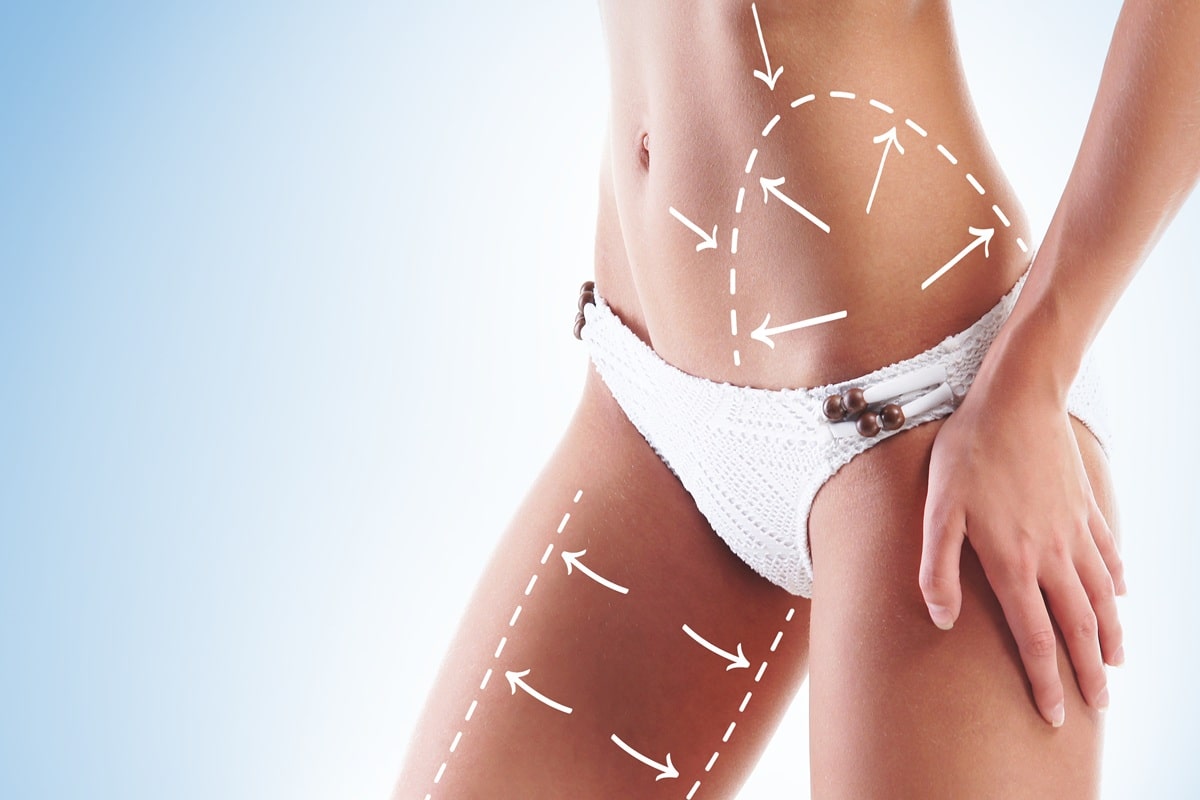When to opt for buttock augmentation without implants?

Full, firm buttocks have become a symbol of the female figure. Is it possible to add volume to them without implants? Yes! Although exercise and diet can help firm the body, genetics often determine the shape of the buttocks, which means that natural methods do not always give satisfactory results. Fortunately, modern aesthetic medicine offers buttock augmentation with a transplant of your own fat. This is a safe and effective alternative to implants to achieve a naturally proportioned silhouette.
For whom is the buttock augmentation procedure?
The buttock augmentation procedure without the use of implants is an ideal solution for people who want to improve the shape, volume and firmness of this body part in a natural way. The method involves transplantation of the patient's own fat tissue (lipotransfer), which allows not only to model the silhouette, but also at the same time to reduce excess fat in other areas of the body such as the abdomen, thighs or hips.
The main indications for the treatment are:
- small buttock volume - for people who want to achieve fuller shapes without implants,
- Uneven buttock contour - in case of asymmetry or volume loss,
- loss of firmness and volume - related to the aging process or major weight loss,
- desire to slenderize other parts of the body - the ability to remove fat from other areas at the same time, which improves the proportions of the figure,
- preference for natural methods - for people who do not want to use implants or artificial fillers.
Natural body contouring - buttock augmentation with fat grafting
Many people seek to improve the appearance of their bodies through special diets and intense workouts, hoping to increase volume in selected areas, including the buttocks. Unfortunately, genetics and body structure can be a natural limitation - in some people, even long-term exercise does not lead to the desired results. Until recently, the most common method of choice was buttock augmentation with implants, but not everyone wants to undergo this invasive procedure. An alternative to implants is fat transplantation (lipotransfer), a method that allows natural shaping of the buttocks using the patient 's own fat tissue. The procedure is increasingly popular because it combines two effects - slimming the figure through liposuction and enlarging the buttocks in a natural way. This gives the patient a harmonious, proportional silhouette, without the need for implants or artificial fillers.
The advantage of this method is that there is no risk of rejection, since the transplanted material comes from the patient's body. After a few months, some of the fat cells are absorbed, but about 60-80% of the transplanted tissue remains permanently, providing a long-lasting effect of naturally firmer and fuller buttocks.
Gluteal fat augmentation - what does the procedure look like?
The procedure allows to enhance the buttocks and improve the proportions of the figure. Before the procedure is performed, the patient has a detailed consultation, during which, in addition to a thorough history, the doctor assesses the amount of fat tissue that can be transplanted. This meeting allows the treatment plan to be tailored to the patient's individual needs and anatomical conditions.
The procedure itself takes place under general or local anesthesia and consists of several steps.
- Liposuction - fat harvesting. Fat is extracted by gently suctioning excess tissue from selected areas of the body, such as the abdomen, thigh, hip or back. This allows not only to enlarge the buttocks, but also to model the figure.
- Fat purification and preparation. The harvested fat tissue is purified and subjected to special processing to isolate the most valuable fat cells and stem cells. This gives the transplanted cells a better chance of survival and permanent establishment in the new location.
- Fat transplantation to the buttocks. The purified fat is precisely inserted into selected areas of the buttocks using thin cannulas. The doctor contours the figure, taking care to achieve a symmetrical, natural effect that works in harmony with the rest of the patient's body.
- Final modeling and completion of the procedure. After the transplant is completed, the doctor carefully checks the fat distribution and shapes the shape of the buttocks. After the procedure is completed, the patient is given recovery recommendations to ensure the best possible assimilation of the transplanted tissue.
Does buttock augmentation require convalescence?
Fat grafting is a less invasive alternative to implants, which translates into shorter recovery time and lower risk of complications. Unlike implants, the method does not require large surgical incisions, which means no visible scars and much faster tissue healing. As a result, patients can return to daily activities in as little as 7-14 days, without the need for a long recovery. In addition, since the transplanted fat comes from the patient's own body, the risk of infection is reduced.
Advantages of buttock augmentation with fat grafting
Gluteal augmentation with own fat is one of the most natural and safe methods of body contouring. Although part of the transplanted fat is naturally absorbed during the initial healing phase, the remainder permanently integrates into the tissues, becoming a natural part of them. This means that unlike implants, which may need to be replaced every few years, the effects of lipotransfer are permanent.
One of the biggest advantages of fat grafting is the ability to achieve an effect that both visually and to the touch resembles natural tissue. This keeps the buttocks soft and supple, without the risk of an artificial appearance or noticeable edges, which can happen with implants. Since the material comes from the patient's own body, the transplanted fat is evenly distributed, so the buttocks look harmonious and respond naturally to movement - whether walking, sitting or exercising. What's more, the doctor precisely models their volume and shape, making sure that the effect is proportional and matches the rest of the figure.
Transplanted fat, unlike implants, does not need to be replaced, because once healed the fat retains its volume and structure permanently. This reduces the risk of complications, such as shifting of the filling material, hardening or asymmetry, which can occur with implants. An additional advantage of this method is the possibility of gentle correction in the future - if the patient wants to achieve an even more pronounced effect, it is possible to carry out another fat grafting, which allows to gradually model the silhouette according to individual expectations.
FAQ
Is buttock augmentation with fat safe?
Yes, the method is safe and well tolerated by the body, as it uses the patient's own fat tissue, eliminating the risk of rejection or allergic reactions. In addition, the procedure is less invasive than implants, which means shorter recovery time and less risk of complications.
How long do the results of buttock augmentation with fat last?
The effects are permanent, as about 60-80% of the transplanted fat cells remain permanently. Initially, some of the fat may be absorbed (about 20-30%), so the effect can be evaluated after a few months. If necessary, another transplant can be performed to achieve an even better result.
Are the results of fat transplantation immediate?
The effects are visible immediately after the procedure, but note that initially there may be swelling, which gradually subsides over several weeks. The final shape of the buttocks can be assessed after 3-6 months, when the transplanted fat cells have fully settled.
Do scars remain after the procedure?
No, because the procedure is performed with thin cannulas that do not require large incisions. As a result, no visible scars remain, which distinguishes this method from implant surgery.
Are there contraindications to the procedure?
Yes, contraindications include pregnancy and breastfeeding, chronic diseases (diabetes or hypertension if unregulated), autoimmune diseases and blood clotting disorders, insufficient fat tissue for transplantation.
What body parts can be a source of fat for transplantation?
Fat is taken from areas of excess fat, most commonly the abdomen, hips, thighs or back.
Can the transplanted fat shift?
No, because the fat is precisely administered and gradually integrates into the tissues. Unlike implants, there is no risk of displacement, asymmetry or recoil.
Can the procedure be repeated?
Yes, if the patient wants an even more complete effect, further fat grafts can be performed. The next procedure can be performed after the full stabilization of the effects of the first one, that is, after about 6-12 months.
Can you achieve the same effect as with implants?
Fat grafting allows for natural augmentation and modeling of the buttocks, but does not have as spectacular an effect as implants. If a patient expects a very large augmentation, he or she should consider implants.
Can buttock fat augmentation be combined with other procedures?
Yes, lipotransfer is often combined with liposuction to further slenderize the figure. Other body contouring procedures, such as a skin lift, can also be performed if the patient is struggling with loss of firmness.



.webp)









